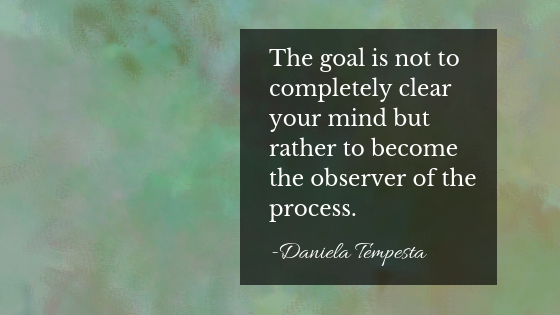Lately, it seems like everyone is talking about mindfulness. And there’s a good reason for all the buzz — mindfulness has been proven to be incredibly effective in helping people with all sorts of things, including reducing stress and anxiety. But let’s be honest, practicing mindfulness can be quite challenging. I hear from my clients all the time “I’m not cut out for practicing mindfulness because I can’t empty my mind” or “Whenever I close my eyes to meditate I have too many thoughts flying around in my head! I can’t do it.”
That’s when I remind them that practicing mindfulness does not mean emptying the mind of all thoughts. It’s totally natural and human to have lots of thoughts zooming through your mind, especially when you take a moment to slow down. The goal is not to completely clear your mind but rather to become the observer of the process.

For example, when I’m practicing mindfulness, focusing on my breath, and a thought comes into my head, I take these 3 steps:
- I notice that my mind has wandered.
- I non-judgmentally acknowledge the thought.
- I bring it back into my focus point, (i.e a sensation in my body, my breath, or sounds in my environment.
This kind of practice can be really interesting, because it helps us get to know our mind and notice patterns. I have noticed that when I’m meditating, my mind often goes to planning. In those moments I’ll acknowledge to myself “okay, that was a thought about planning” and then I’ll come back to my focus point.
Over time, mindfulness can really help us see that we are not our thoughts. This gives us the valuable skill of being able to slow down and get the full perspective of what’s happening before reacting to a triggering situation. To me, this is the most important benefit of mindfulness — increasing our ability to slow down and respond rather than react.
If you have never practiced mindfulness, I encourage you to start devoting a few minutes a day to being present with your breath and your environment. You probably won’t find instant gratification, but if you continue over time, you’ll build up your mindfulness “muscle” just as you can build any muscle with daily exercise.



